10+ Years Experience
Specialist Horse Menages

Enquire Today For A Free No Obligation Quote
Pole exercises are an effective method that not only keeps your horse fit, but also sharpens their focus and coordination, taking their performance to new levels.
Dive into our complete guide on pole exercises for horses and discover how you can incorporate this practical training system into your horse’s daily regime.
Pole exercises can be a fantastic addition to your riding and training routine, providing a range of benefits for both you and your horse. These exercises involve laying poles on the ground in a level riding surface such as an arena.
The aim is for your horse to step over the poles with a normal stride, rather than jumping them. Pole work exercises can be done at various gaits – walk, trot, or canter – and can be adjusted in complexity to suit the training level of you and your horse.
One key aspect of pole exercises is that they not only engage your horse’s hindquarters but also improve their agility. By strategically placing poles in different patterns or configurations, you can encourage your horse to become more flexible, coordinated, and balanced in their movements.
Exposing your horse to pole exercises helps develop their proprioception (the awareness of their body and limbs in space), which leads to improved balance
Additionally, navigating through poles demands precision and accuracy, enhancing their coordination skills.
These exercises offer significant benefits regardless of your discipline or riding goals. Whether you are focusing on dressage, show jumping, eventing, or recreational riding, pole exercises provide a solid foundation for developing physical attributes that can contribute to success in any discipline.
For show jumping, your horse needs to have strong hindquarters engagement to power over jumps efficiently while maintaining balance and adjusting stride length between fences.
Incorporating pole exercises into your training regimen can help improve your horse’s athleticism, making them more responsive to your aids and allowing them to execute tight turns with ease.
As with any training programme, it’s crucial to start with simple pole exercises and gradually progress to more complex ones as you and your horse gain strength and confidence.
Remember that each horse is unique, so it may take time for them to adjust to new challenges presented by pole exercises. Patience and consistency are key.
Engaging in pole exercises can bring about a wide range of benefits for both you and your horse. These exercises not only improve physical fitness but also enhance the overall partnership and communication between horse and rider.
One significant benefit is the improvement in your horse’s balance. As they navigate through poles, they must carefully adjust their body to maintain an even stride, encouraging the development of a strong core and improved proprioception.
This enhanced balance has a positive impact on their overall performance, leading to smoother transitions between gaits and better control during turns.
Pole exercises also work wonders for strengthening your horse’s hindquarters and developing increased engagement. The act of stepping over poles requires them to engage their hind end, resulting in stronger muscles and improved collection.
This added strength and engagement enable your horse to generate more power from behind, leading to more impulsion and elevation in their movements.
In addition to the physical benefits, pole exercises can provide mental stimulation for your horse. By introducing variations into their training routine, you keep them engaged and interested, preventing boredom. This mental stimulation contributes to a happier and more responsive equine partner.
By engaging in pole exercises regularly, both you and your horse will experience improvements in suppleness, flexibility, rhythm, coordination, back strength, topline development, bend, elasticity, range of motion in limbs, and joint flexibility.
Training your horse to engage their hindquarters and improve agility through pole exercises requires a systematic approach. Here is a step-by-step guide to help you in this training process.
Warm-Up: Before starting any training session, ensure that your horse is properly warmed up. Begin with some light stretching exercises and gentle movement in walk and trot to prepare their muscles and joints for the upcoming pole work.
Introduce the Poles: Start by introducing your horse to the concept of stepping over poles. Place a single pole on the ground and ask your horse to walk over it. Reward them for their cooperation and gradually increase the number of poles as they become more comfortable with the exercise.
Walk Exercises: Once your horse is confident at walking over poles, you can progress to more advanced exercises. Set up a series of poles in a straight line or in various patterns such as circles or diagonals. Ask your horse to walk over the poles while maintaining a steady rhythm and straightness.
Trot Exercises: As your horse becomes proficient at walking over poles, you can introduce trot exercises. Set up multiple poles in succession, creating a line of cavaletti or raised trotting poles. Encourage your horse to maintain an active and rhythmic trot while negotiating these poles.
Canter Exercises: For more advanced horses, canter exercises can be added into the training regimen. Set up canter poles, which are slightly wider apart than trot poles, to encourage your horse to engage their hindquarters and maintain balance throughout the stride.
Gridwork: To further challenge your horse’s agility and hindquarter engagement, consider incorporating gymnastic gridwork into your training routine. These grids consist of a series of poles set at specific distances and heights, creating a jumping challenge that encourages hindquarter engagement, coordination, and accuracy.
Remember to progress gradually, allowing your horse to build strength and confidence with each new exercise. Always monitor their response and adjust the difficulty level accordingly.
Engaging the hindquarters is a fundamental aspect of pole exercises for horses. When the hindquarters are properly engaged, it results in improved balance, rhythm, power, and overall athleticism. Here are key techniques to help you achieve this engagement:
Impulsion: Impulsion refers to the forward energy generated from the hindquarters. Encouraging impulsion through properly timed aids will help engage your horse’s hind end and create a powerful stride over the poles. Use half-halts, transitions, and well-timed leg aids to generate impulsion and maintain an active hindquarter engagement throughout the pole exercises.
Collection: Collection involves gathering your horse’s energy into a more compact frame while maintaining impulsion. By asking your horse to collect their stride over the poles, you promote greater engagement of their hindquarters. Practice incorporating moments of collection into your pole exercises by using transitions within gaits or asking for shorter strides without sacrificing impulsion.
Lateral Work: Incorporating lateral movements such as shoulder-in, haunches-in, and leg-yield can be highly effective in engaging the hindquarters.
These movements encourage your horse to step under themselves with their hind legs, promoting increased strength and suppleness in their hind end. Perform these lateral movements both on straight lines and while negotiating poles to further enhance engagement.
Half-Halts: Regular use of half-halts during pole exercises helps rebalance your horse, encouraging them to shift their weight onto their hindquarters and engage them more actively. Utilise half-halts before and after poles to maintain a consistent rhythm, balance, and hindquarter engagement throughout your training session.
By incorporating these key techniques into your pole exercises, you will maximise your horse’s hindquarter engagement, resulting in improved overall agility and performance.
Remember to be patient and consistent in your training approach, allowing your horse time to develop the necessary strength and understanding of the exercises.
Pole exercises can be a fantastic addition to your training routine, regardless of your horse’s skill level. These exercises are versatile and can be adjusted to suit the needs of both beginners and advanced riders. Let’s explore some pole exercises that cater to different skill levels.
For beginners, simple pole exercises help establish a solid foundation. Start with basic trotting poles set at a comfortable distance apart. This exercise improves rhythm, balance, and engagement of the hindquarters.
As you progress, you can gradually increase the difficulty by adding ground poles in various configurations such as diagonals or grids. These exercises further develop coordination and encourage the horse’s agility.
As riders gain more confidence and their horses become proficient in navigating simple pole exercises, they can move on to more challenging exercises.
Advanced riders might engage their horses in raised pole work, where poles are elevated off the ground using cavaletti or small jumps. This increases the difficulty and requires enhanced concentration from both rider and horse.
Advanced exercises focus on refining the horse’s adjustability and collection while engaging the hindquarters effectively. By incorporating these challenging exercises into your training routine, you can continue to develop your horse’s athleticism and improve their overall performance.
As with any training programme, it’s crucial to start with the basics and progressively build upon them. When transitioning from beginner pole exercises to more advanced ones, there are several key factors to consider.
First, focus on developing a solid foundation of rhythm, balance, and engagement of the hindquarters. Mastering these fundamental aspects will provide a strong platform for tackling more complex exercises.
Start with basic trotting poles and gradually introduce various ground pole configurations such as diagonals or grids to enhance coordination and agility.
Once you and your horse have become proficient in these intermediate exercises, you can begin incorporating raised pole work using cavaletti or small jumps.
This advanced level of pole exercises challenges the horse’s concentration and adjustability while further engaging their hindquarters effectively.
By gradually increasing the difficulty level of pole exercises and consistently focusing on improving key elements like rhythm, balance, engagement, coordination, and concentration, you can make significant strides in enhancing your horse’s agility and engaging their hindquarters effectively.
When it comes to pole exercises for horses, maintaining their focus is crucial for a successful session. Distractions can easily hinder progress and make the exercises less effective. Here are some tips to help keep your horse engaged and focused during pole work.
First and foremost, establish a clear and consistent routine. Horses thrive on structure, so having a set schedule for pole exercises can help them mentally prepare and stay focused.
Whether you choose to incorporate these exercises into your warm-up or dedicate specific sessions solely to pole work, consistency will create familiarity and reduce distractions.
Another key aspect is using positive reinforcement techniques. Rewarding your horse with praise, treats, or brief breaks when they successfully navigate the poles can help reinforce their focus and motivation. By associating the exercises with positive experiences, your horse will be more inclined to stay attentive.
One effective method to maintain focus is by incorporating variations in the pole exercises. Horses, like humans, can become bored with repetitive tasks. By mixing up the patterns or introducing new elements such as raised poles or different spacings between them, you can challenge your horse’s mind and keep their attention sharp.
For instance, you could start with a simple trotting exercise over poles in a straight line. Once your horse becomes comfortable with this pattern, you can progress to serpentines or figure-eight patterns using the poles. This variety not only adds interest but also encourages your horse to pay closer attention to their footwork and balance.
Furthermore, it’s essential to be mindful of the environment in which you conduct the pole exercises. Choose an area that is relatively quiet and free from distractions such as loud noises, unfamiliar objects, or other animals. Minimising external disturbances will enable your horse to maintain their focus solely on the task at hand.
Maintaining a calm and focused demeanour will help create a positive atmosphere and encourage your horse to concentrate.
Always remember to progress gradually and avoid overwhelming your horse with complex or difficult exercises too soon. Start with simpler patterns and gradually increase the difficulty as your horse becomes more confident and focused.
By building a solid foundation and gradually challenging their abilities, you can keep your horse engaged without overwhelming them.
Keeping your horse focused on pole exercises requires consistency, positive reinforcement, variation, a suitable environment, mindful energy, and gradual progression.
By incorporating these strategies into your training routine, you can enhance your horse’s engagement, attention, and overall performance during pole work.
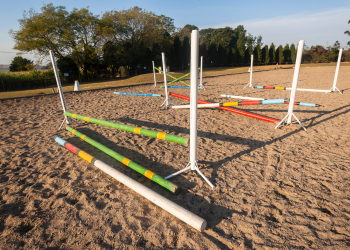
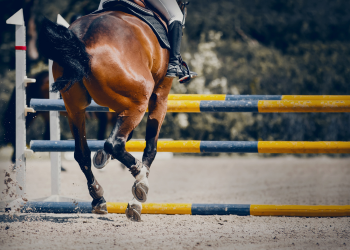
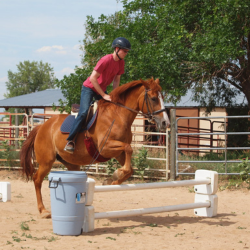
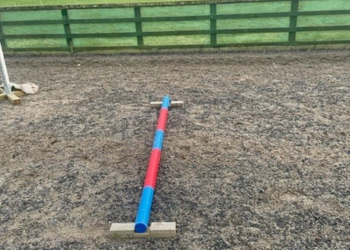
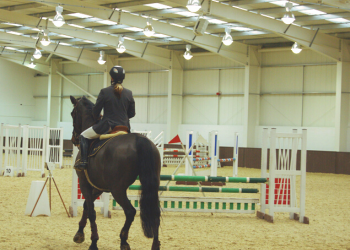
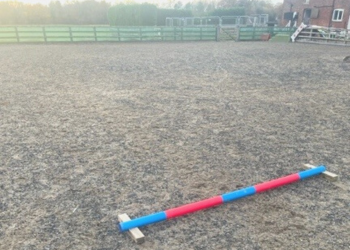
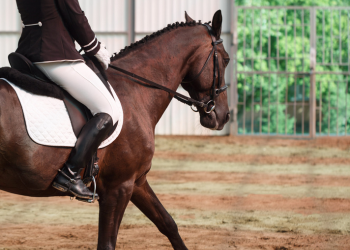

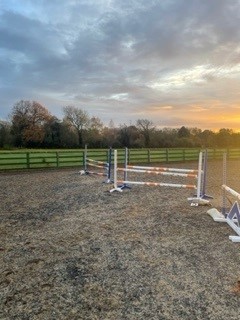
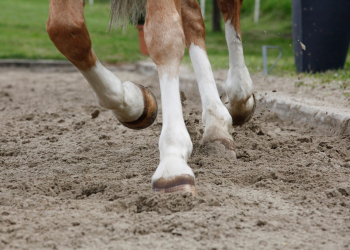
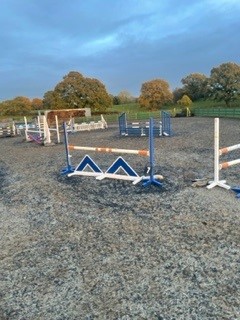
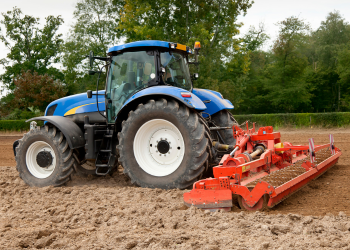

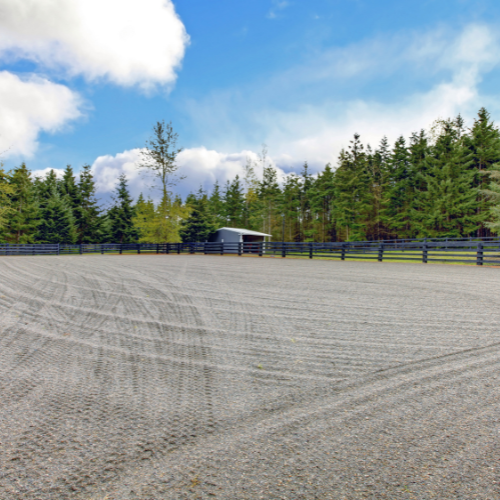

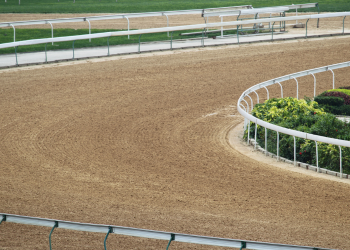
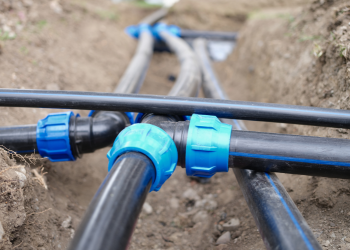
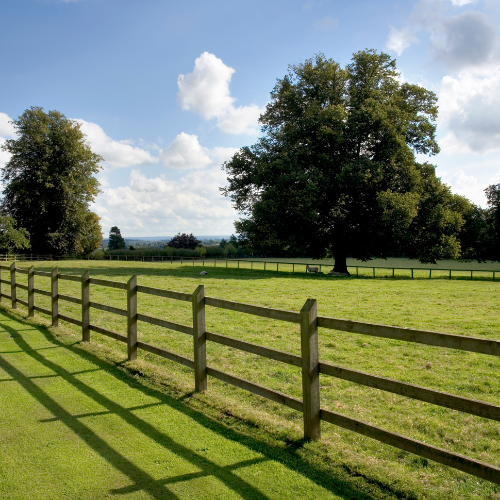


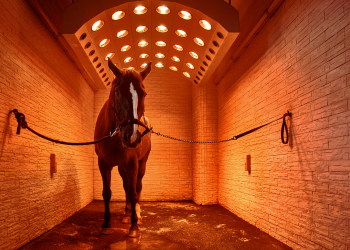


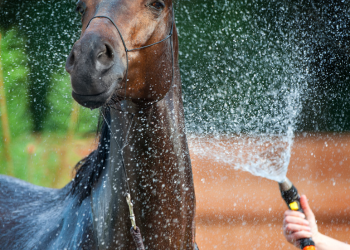
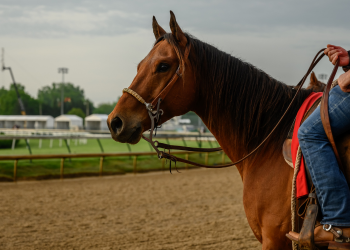
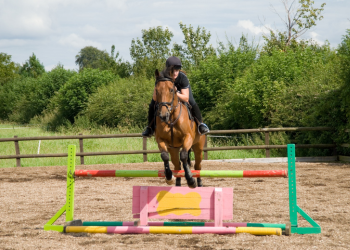
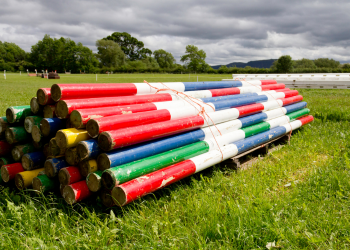
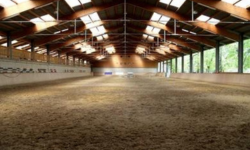
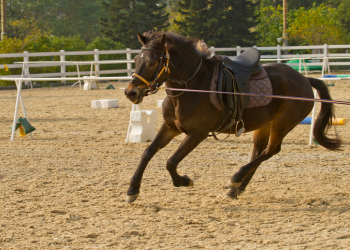
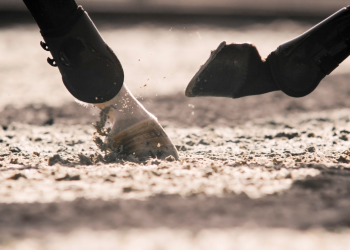
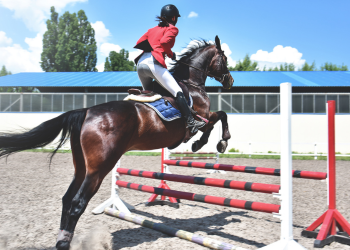
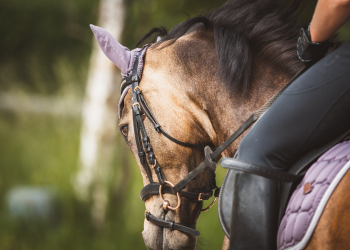
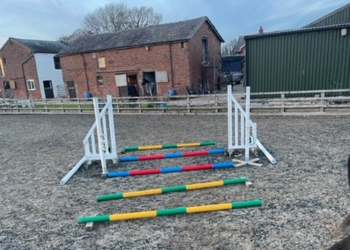


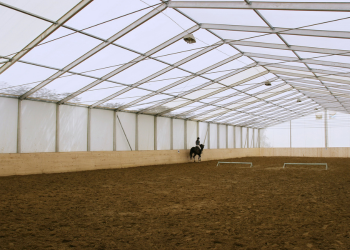
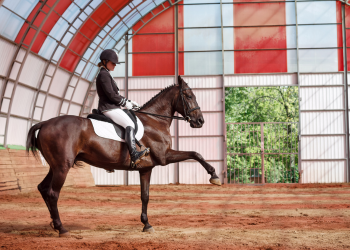
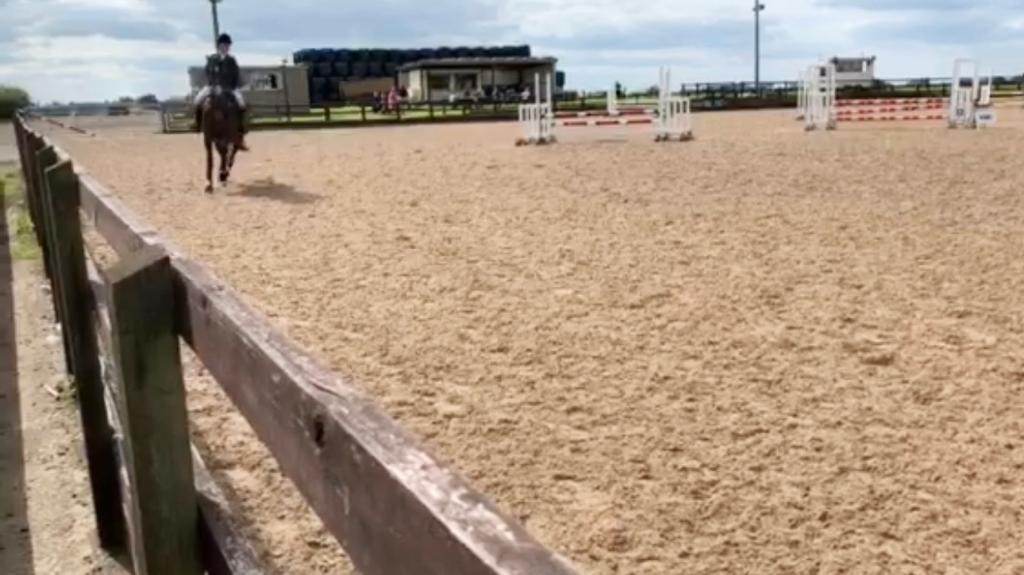
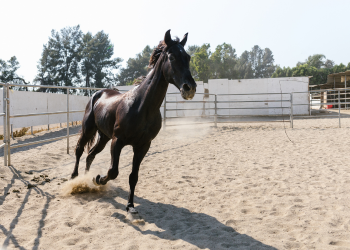


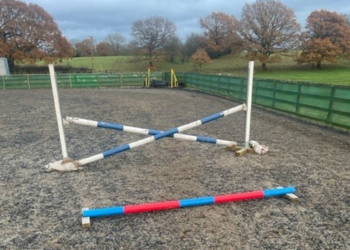


We Aim To Reply To All Enquiries With-in 24-Hours